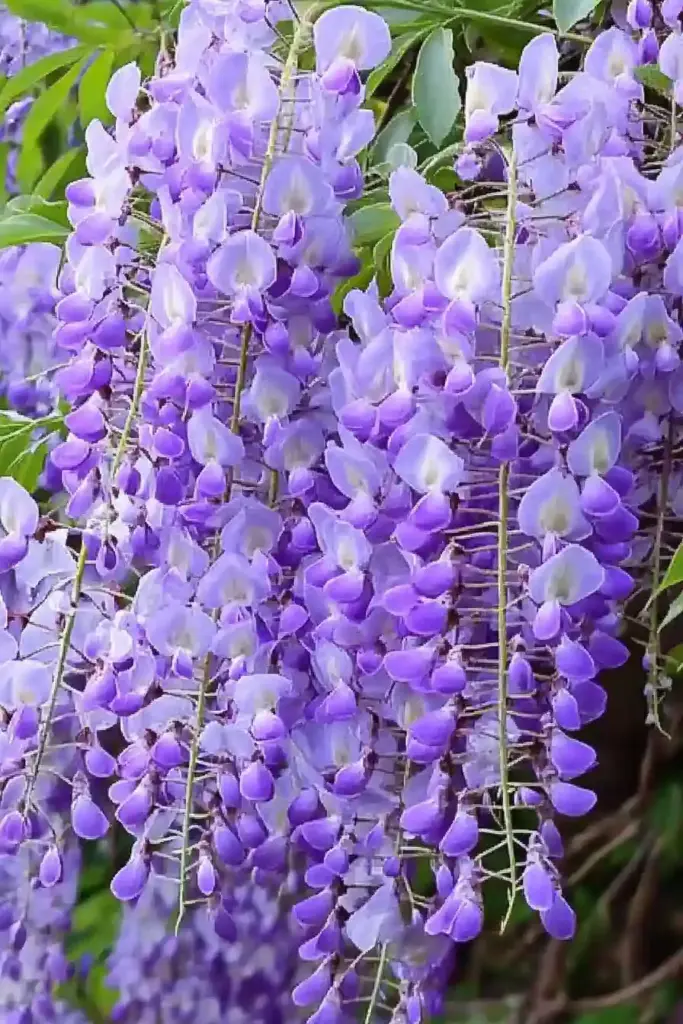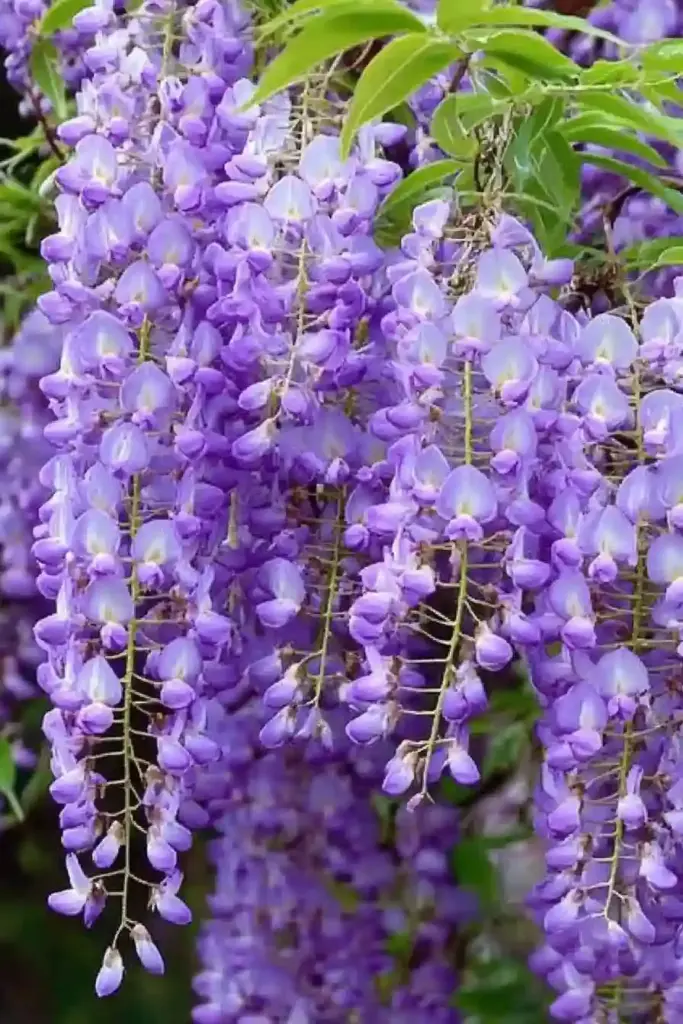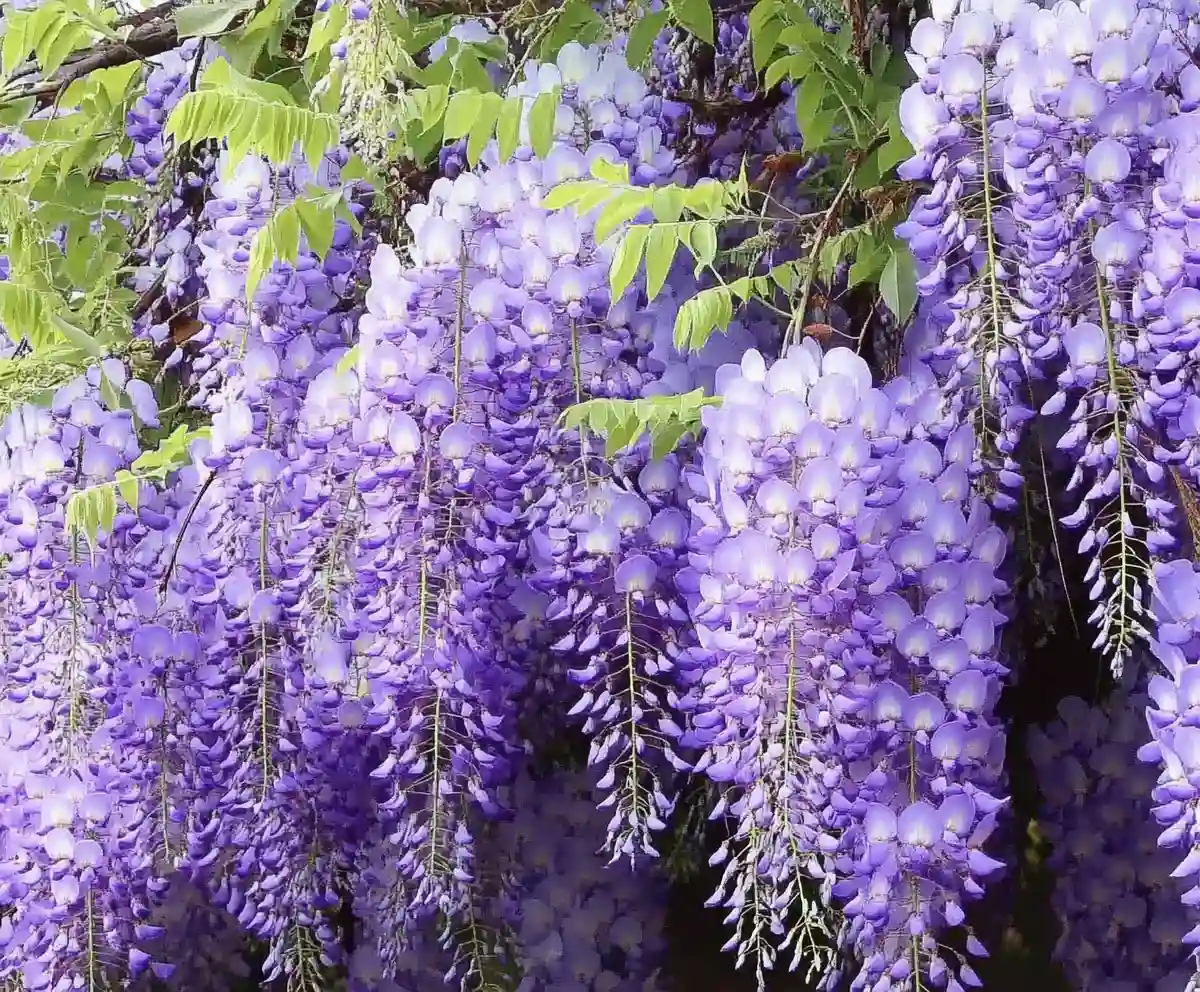Wisteria is one of the most breathtaking additions to any garden, famous for its cascading, fragrant blossoms that drape over pergolas, fences, and trellises. With its enchanting hues of purple, pink, and white, this vigorous climber brings a touch of elegance and romance to outdoor spaces. But behind its beauty lies a plant that needs space, structure, and just the right care to thrive without overwhelming your garden.
In this guide, you’ll learn everything you need to know about how to grow wisteria—from planting and pruning to preventing overgrowth—so you can enjoy its floral show year after year.
What Is Wisteria?
Wisteria is a genus of fast-growing, woody vines in the legume family, known for their dreamy, cascading flower clusters and lush green foliage. Often spotted climbing trellises, arbors, or walls, wisteria brings a magical, almost fairytale feel to gardens during its blooming season.
Key Characteristics of Wisteria:
- Flower Appearance: Dense, pendulous clusters (known as racemes) that bloom in shades of purple, lilac, pink, and white.
- Growth Habit: Vigorous climber that can grow over 60 feet tall and spread 30 feet or more.
- Fragrance: Sweet, floral scent that’s especially potent during springtime.
- Leaf Structure: Pinnate leaves with multiple leaflets that create a soft, feathered look.
Bloom Times by Region:
- Asian Species (like Wisteria floribunda from Japan and Wisteria sinensis from China): Typically bloom in early to mid-spring.
- North American Species (such as Wisteria frutescens): Often bloom later, in early summer through midsummer.
Wisteria isn’t just about beauty—it’s a plant with personality. Depending on the species, vines can twist clockwise or counterclockwise, and their growth can be graceful or wild if not properly maintained.
Where Does Wisteria Come From?

Wisteria may be a garden favorite today, but its roots stretch across continents and centuries. This captivating climber is native to parts of Asia and North America and has a rich botanical and cultural background that adds to its allure.
Native Regions
- Asia: Japan, China, and Korea are home to some of the most popular ornamental species. These varieties are known for their dramatic flower displays and cultural significance.
- North America: Species like Wisteria frutescens (American wisteria) and Wisteria macrostachya (Kentucky wisteria) are native to the southeastern United States and are typically less aggressive than their Asian cousins.
Botanical History
The name “Wisteria” was coined by English botanist Thomas Nuttall in honor of American anatomist Caspar Wistar. Over time, different species have been introduced and adapted to gardens worldwide, especially in Europe and the U.S.
Fun Fact: Twisting Vines with a Twist!
One quirky trait of wisteria is the direction its vines twine:
- Japanese wisteria (Wisteria floribunda) twines clockwise.
- Chinese wisteria (Wisteria sinensis) twines counterclockwise.
Knowing the species you’re working with can help you train it more effectively on trellises or pergolas—and can even be a conversation starter in your garden!
3 Key Things to Consider When Growing Wisteria

Wisteria is stunning, no doubt—but it’s also a powerful grower that can quickly take over if you’re not prepared. To ensure a healthy, manageable vine that blooms beautifully year after year, keep these three essential factors in mind.
1. Give Wisteria Room to Grow
- Wisteria needs plenty of space—both vertically and horizontally.
- Plant near a strong, permanent support structure like a steel arbor, wooden pergola, or sturdy wall. This vine can become heavy and needs something it won’t overpower.
- Choose well-draining, fertile soil, and while wisteria isn’t too fussy about watering, it appreciates consistency, especially when establishing roots.
💡 Tip: Avoid planting wisteria too close to your home or other plants—it will spread quickly and can become invasive in tight spaces.
2. Match the Plant to Your Climate
- Most wisteria varieties thrive in full sun, needing at least 6 hours of direct light daily to bloom at their best.
- Japanese and Chinese varieties are gorgeous but may be invasive in parts of North America. Consider American wisteria if you’re in the U.S. and prefer a native, non-invasive option.
- Wisteria is deciduous, meaning it drops its leaves in the fall, but will burst into bloom from late spring to midsummer depending on the type.
🌱 Pro Tip: If your wisteria isn’t flowering, it’s usually due to a lack of sun or poor pruning—not fertilizer.
3. Prune to Keep Growth in Check
- Wisteria responds well to regular pruning, which helps shape the plant and encourage more blooms.
- In early summer, trim back long shoots to control growth and focus the plant’s energy on flowering.
- In late winter, do a harder prune—cutting back each stem to 4–6 buds—to prep for the spring display.
- Remove dead or tangled branches to promote air circulation and overall plant health.
How to Care for Wisteria Year-Round
While wisteria is a hardy and mostly low-maintenance plant, a little seasonal attention can go a long way. Here’s how to keep it thriving from spring to winter.
🌱 Watering Wisely
- Wisteria is fairly drought-tolerant once established.
- Aim for about 1 inch of water per week, especially during dry spells.
- Avoid overwatering—soggy soil can lead to root rot and poor flower production.
🌿 Soil & Feeding Tips
- Enrich the soil each early spring with compost or well-rotted manure.
- Top with a layer of organic mulch to retain moisture and suppress weeds.
- Wisteria usually doesn’t need fertilizer—but if growth seems sluggish, opt for a low-nitrogen fertilizer to encourage blooms, not just leafy growth.
✂️ Pruning Side Shoots
- In late winter, trim back the side shoots on each main stem to leave only 4–5 buds.
- This not only controls size but boosts flower production in the spring.
- You can also lightly prune throughout the growing season to tame wild growth or redirect vines.
🌸 Spacing New Plants
- If planting multiple wisteria vines, space them at least 15 feet apart.
- This allows each plant ample room to spread and ensures they don’t compete for sunlight or soil nutrients.
🐝 Bonus: Wisteria flowers are a pollinator magnet, attracting bees and butterflies that benefit the rest of your garden too.
Is Wisteria Toxic?
While wisteria is undeniably beautiful, it does come with a caution label—yes, it’s toxic if ingested. That doesn’t mean you can’t enjoy it in your garden, but it’s important to know which parts to watch out for and how to handle them.
🚫 Toxic Components
- Wisterin and lectin are the two primary toxins found in wisteria.
- These compounds are highly concentrated in the seed pods and seeds but can also be present in leaves and stems.
⚠️ Symptoms of Ingestion
If consumed—by humans, dogs, cats, or other animals—symptoms may include:
- Nausea
- Vomiting
- Stomach pain
- Diarrhea
- Dizziness (in more serious cases)
👶 Pet- and Kid-Safe Tips
- Remove seed pods after blooming season to reduce risk.
- Consider fencing or planting in areas out of reach of children or animals.
- Teach kids not to eat anything from the garden unless an adult says it’s safe.
🌼 Good to know: Wisteria is not a contact irritant, so touching the leaves or flowers won’t cause rashes—it’s ingestion that poses the risk.
Conclusion
Wisteria is a showstopper in any garden, offering a cascade of fragrant flowers and fast-growing vines that add vertical interest and charm. But with great beauty comes great responsibility—this plant needs space, structure, and regular pruning to shine without overwhelming your outdoor space.
Whether you choose the elegant Japanese wisteria, the robust American type, or something in between, proper care will reward you with stunning blooms year after year. Just give it the sun it craves, prune wisely, and keep pets and kids safe from its toxic seed pods.
So, if you’re dreaming of a garden that feels like a secret retreat, wisteria might be the vine that brings it to life—just be ready to show it who’s boss.


